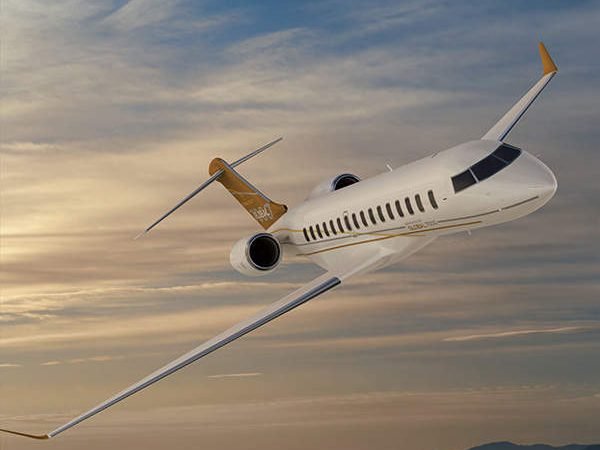The new generation of eco-friendly private jets: Technological and design innovations in luxury private aviation
- Companies like Gulfstream, Bombardier, and Dassault are leading this revolution in luxury sustainable aviation, offering aircraft models that minimise their environmental impact and ensure an unparalleled flying experience for their clients.

Managing Director at LUXONOMY™ Group Middle East
Luxury private aviation has undergone a radical transformation in recent years, thanks to the emergence of technologies aimed at reducing its environmental impact. One of these innovations is the development of hybrid and electric engines, which allow aircraft to consume less fuel and emit fewer pollutants into the environment.
A prominent example of this trend is the Ampaire Electric EEL, a hybrid aircraft that combines electric propulsion with an internal combustion engine. This model can travel up to 200 miles (320 km) on a single charge, making it an attractive option for short and medium distance flights.
Lightweight and sustainable construction materials: reducing the carbon footprint in private aviation
Another key innovation in the field of luxury sustainable aviation is the use of lightweight and sustainable construction materials. These materials, such as aluminium alloys and carbon, allow for the manufacture of lighter and more resistant aircraft, which translates into a lower need for fuel and a lower emission of CO2.
One example of a company at the forefront of using these materials is Boom Supersonic, which is developing the Overture, a luxury supersonic aircraft with a capacity for 55 passengers. This aircraft uses advanced composite materials to reduce its weight and achieve optimal performance in terms of energy efficiency and speed.
Efficient and aerodynamic design: how the shape of aircraft influences their environmental impact
The design of aircraft also plays a crucial role in reducing the environmental impact of luxury private aviation. An efficient and aerodynamic design allows aircraft to reduce air resistance and, therefore, consume less fuel.
An example of this is the Airbus ACJ320neo, which incorporates technologies such as Sharklets, devices on the wingtips that optimise aerodynamics and reduce fuel consumption by 4%. In addition, the ACJ320neo has state-of-the-art engines that offer greater energy efficiency and a reduction in CO2 emissions.
Leading manufacturers in luxury sustainable aviation
Below, we present some of the manufacturers at the forefront of luxury sustainable aviation:
- Gulfstream: This American company is known for its high-performance and luxurious private jets. One of its most innovative models is the Gulfstream G700, which features Rolls-Royce Pearl 700 engines that offer greater energy efficiency and a lower environmental impact.
- Bombardier: The Canadian manufacturer Bombardier is another leader in the luxury private aviation industry, with models such as the Global 7500. This aircraft uses advanced composite materials and cutting-edge engine technology to reduce CO2 emissions and offer greater performance in terms of energy efficiency.
- Dassault: The French company Dassault is also committed to sustainability in luxury private aviation. Its Falcon 6X model features Pratt & Whitney Canada PW812D engines that offer reduced fuel consumption and CO2 emissions, as well as a lower noise level compared to other aircraft in its category.
The role of technology in reducing the environmental impact of luxury private aviation
In addition to innovations in design and materials, technology is also playing a crucial role in reducing the environmental impact of luxury private aviation. Here are some of the most notable technologies in this field:
- Energy management systems: These systems allow aircraft to optimise energy consumption and reduce CO2 emissions. An example of this is Rolls-Royce's ECO-mode system, which automatically adjusts engine performance to minimise fuel consumption and pollutant emissions.
- Advanced navigation technologies: The implementation of more accurate and efficient navigation systems also contributes to reducing the environmental impact of luxury private aviation. The adoption of technologies such as GPS satellite navigation and performance-based navigation (PBN) allows aircraft to fly more direct routes and optimise their fuel consumption.
- Noise reduction systems: Noise pollution is another important aspect of the environmental impact of aviation. Advances in noise reduction technology, such as the use of absorbent materials and active noise cancellation systems, allow luxury private aircraft to operate with less impact on the quality of life of communities near airports.
The new generation of eco-friendly private jets is a reality thanks to the technological and design innovations that are revolutionising the luxury private aviation sector. Hybrid and electric engines, lightweight and sustainable construction materials, and energy management systems, among others, are enabling manufacturers to develop more environmentally friendly aircraft without sacrificing luxury and comfort.
Companies like Gulfstream, Bombardier, and Dassault are leading this revolution in luxury sustainable aviation, offering aircraft models that minimise their environmental impact and ensure an unparalleled flying experience for their clients.












